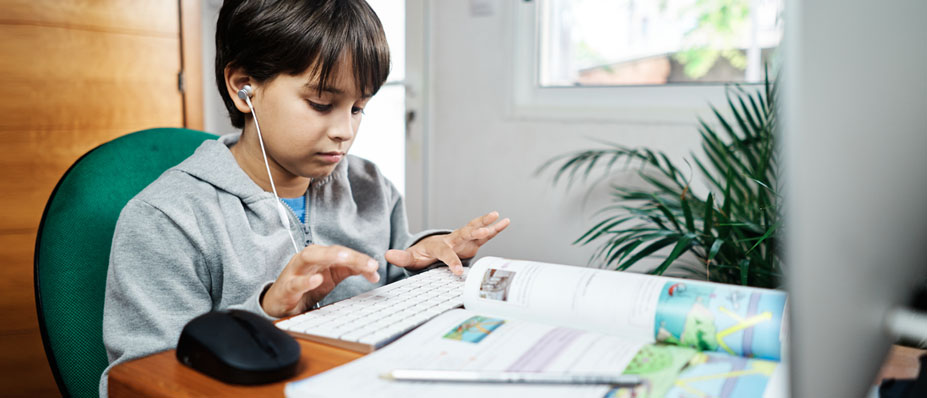Hmm. We’re having trouble finding that
Educational leaders across the nation are debating how to confront the newest villain in the K-12 universe: pandemic learning loss. Some assert that the challenges of remote learning have set an entire generation of students back, while others question how it is possible to measure what was never learned.
What do we really mean by “learning loss”?
While pandemic learning loss is one of the major education buzzwords of 2021, the phenomenon is hardly new.
Learning loss has its origins in the standardized testing industry. Each year, schools administer a smorgasbord of assessments to quantify learning in core subject areas like reading, math, and science. Ideally, students increase their scores each year. If they do not make significant gains, school leaders may consider necessary interventions.
Competition is a byproduct of the nationwide emphasis on standardized testing, and students’ scores hold significant social and economic power. Historically, test performance has been used as justification to promote, retain, and track students, provide special education services and 504 recommendations, and place teachers on improvement plans.
Psychologist Hermann Ebbinghaus characterized the phenomenon of learning loss by graphing the forgetting curve – the exponential decline of memory over time. If new content is highly relevant and meaningful to the learner, and reinforced at frequent intervals after initial exposure, learners are more likely to retain the new information. Otherwise, Ebbinghaus’ curve predicts how learners will forget or “lose” approximately 90% of new content within a month.
American students typically go on summer vacation for more than two months. Many educators disregard the heightened chatter regarding the specter of learning loss, rationalizing that if stakeholders were truly concerned, all K-12 public schools have started operating on a year-round schedule decades ago. Educators have lamented the “summer slide” for over a century, as it inevitably increases the amount of time they spend re-teaching content from the previous year. The sometimes-redundant curricular experience can also lead to a decrease in student engagement.
In addition to learning loss from the summer slide, many students may be confronted with the following challenges or disruptions to their learning experiences:
- Mid-year or frequent school transfers
- Significant illness or injury
- Difficulty getting basic needs met while living in poverty
- Teacher turnover
- In-school activities and drills
- Behavioral disruptions
- Standardized testing days
Perhaps learning loss is not as accurate a term as learning that was never fully accessed.
Pandemic learning loss highlights and amplifies long-existing social inequities
While there is much talk of the dread of pandemic learning loss, many wonder, what exactly has been lost? Who is “losing” most of the learning, and why?
A report from McKinsey & Company reveals that students, on average, lost approximately three months of learning in math and one-and-a-half months of learning in reading. For schools that serve predominantly Black and Hispanic students, the loss was significantly greater. Such findings are on par with the historical nationwide achievement gap, which has long been documented by standardized test score disparities.
The pandemic has revealed and exacerbated longstanding issues in public education, the most significant one being the achievement gap among White and minority students, and students with a high versus low socioeconomic status. Entwisle, Alexander, and Olson’s “faucet theory” illustrates how, during the school year, the “resource faucet” is turned on for all students. Over the summer, the flow of resources ebbs more significantly for students from disadvantaged backgrounds. Students with a higher socioeconomic status have greater access to resources like tutors, online programs, supplemental resources, and summer enrichment programs.
The pandemic learning loss debate is largely centered on the effectiveness of remote instruction. 60% of K-12 students began the 2020-2021 school year fully remote, 20% began in a hybrid mode of remote and in-person, and the remaining 20% began fully in-person. The McKinsey & Company report estimates that 71% of Hispanic students and 69% of Black students learned fully remote, compared to 49% of White students.
Non-English-speaking families undoubtedly experienced difficulties in navigating online curriculum. Many English Language Learner (ELL) students may have had to manage the burden of acting as a translator between their parents and the school district. Black and Hispanic students were also more likely to have challenges accessing internet connectivity and obtaining a one-to-one personal learning device.
Remote learners may also be more inclined to struggle if they do not have adult supervision, a quiet and distraction-free learning environment, or access to special accommodations due to a specific learning disability.
Questioning the validity of standardized tests as a means for measuring learning loss
How is it possible to measure learning loss accurately? Conversely, what are students learning that standardized assessments are unable to capture?
Just as pandemic learning loss has surged as a topic of interest in the educational sphere, so has the notion that standardized tests are a faulty tool for measuring it.
Standardized tests are meant to determine if students meet proficiency benchmarks (minimum scores) in various subject areas. In a year when many teachers were advised to narrow the curriculum and focus on critical standards, standardized tests may not be the best tool to measure learning loss or gain if the student was never exposed to specific content in the first place.
Due to school building closures, many students may have opted out of taking standardized tests in the Spring or Fall 2020 semesters. For students who returned to the building for testing, social distancing protocols may have necessitated less optimal testing conditions.
Annual standardized tests provide what is essentially a screenshot of a 180-day documentary of a student’s school year journey. There are several factors that could influence student performance on a single assessment, including stereotype threat, safety and comfort of the environment, physical health, mental health, and motivation.
Educators are strongly encouraged not to rely on a single piece of data for decision-making purposes. A known bias in standardized testing also perforates the validity of standardized tests to capture perceived learning loss, before or after a pandemic.
Acceleration – not remediation – as the key to moving forward
Recovering from pandemic learning loss will inevitably involve repairing harm from decades of discriminatory policies and regressive practices in education. There are many things that teachers, schools, and policies can do to meet students where they are and ignite their desire to participate in school, whether virtual or in-person.
In choosing content, teachers can prioritize variation over complexity. They can dedicate time to build relational capacity with individual students and the classroom.
Schools and school districts can provide effective professional development on blended learning, cultivate a growth mindset culture, and purchase high quality instructional materials for every classroom. They can also offer summer bridge programs and acceleration academies for students who can increase their learning with more targeted one-on-one interaction.
Federal and state government can enact laws and policies allocating funds to:
- Early childhood development
- Integrative health and wellness (i.e., meditation, yoga)
- Socioemotional learning
- Technology and infrastructure
Hopefully, the most impactful learning loss resulting from the pandemic will be the assumption that learning stops when schooling stops. K-12 schooling has its importance, but it is a mere chapter of a person’s life-long education. Students naturally learn at different paces, and the measurability of their learning depends on many factors outside of our control or perception.
Educators and policymakers moving into a post-pandemic instructional environment should approach school through a value versus deficit lens. Identify what students have learned during an unprecedented time — how they showed resilience and perseverance in the face of challenges and developed new ways of creating and sharing content.
Learning is inherently social, which many unfortunately mistake for competitive. Teachers can provide students with opportunities to collaborate, grapple with relevant, engaging problems, and collaborate on solutions. What we now label a pandemic learning loss could turn into the greatest opportunity for learning in recent history if we systematically approach the situation through an empowered lens.
Source: www.resilienteducator.com
Also read: How to Help Your Child Develop Her Memory
Back to All Thane Educational Blog, Article, Resource, Tips




Contact Us